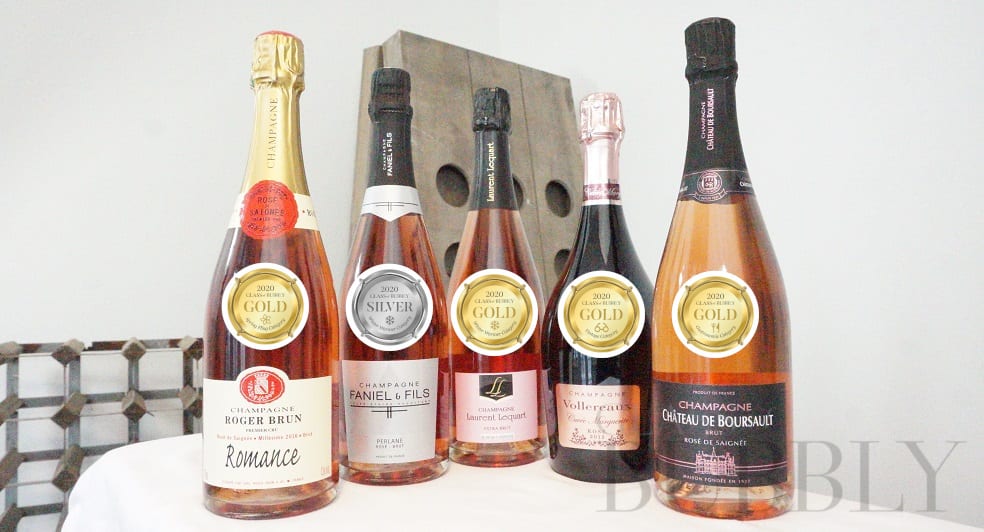How To Really Enjoy Champagne
19th October 2021
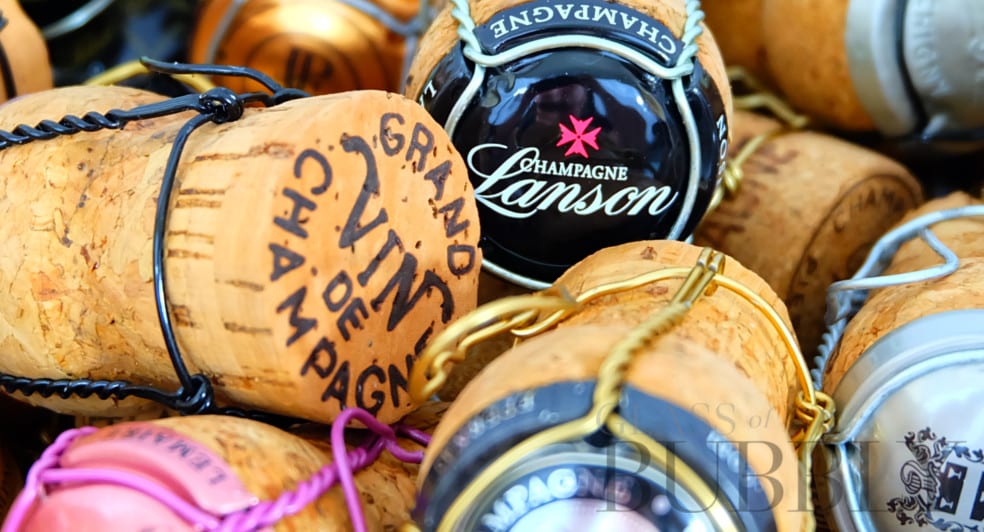
What is Champagne to you? Is it a bottle you pop open on a special occasion, is it something you enjoy once a week with family or friends or is it something you really take your time over and can spend easily 10 minutes on one glass, discovering the aromas and flavours that are expressed by the outstanding work of the winemaker.
However, where ever and with whomever you enjoy your Champagne, there is a simple way to get the most of out each glass, let me show you how.
First and foremost, Champagne is a drink to be enjoyed, if you’re not enjoying it, then you’re not drinking it right, so if the way you enjoy Champagne is just to drink it without needing to spend time over the aromas or flavours, then just drink, enjoy it how you want to enjoy it, but if you’re looking to find a little more of an experience from each glass, keep on reading.
Buying a Bottle
In the supermarket or from an online merchant, we focus on two very important things when we buy, how much it costs and what the bottle looks like, we start by deciding our budget, after that, we start looking at the bottle, the shape of it, the label on it, is it sleek and black or bright and colourful, does the name of the winery stand out, do I like the look of the font they used, is it clear what this Champagne is? All those questions, plus more will rush through your mind consciously and subconsciously as you narrow down which bottle you like the look of.
Opening a Bottle
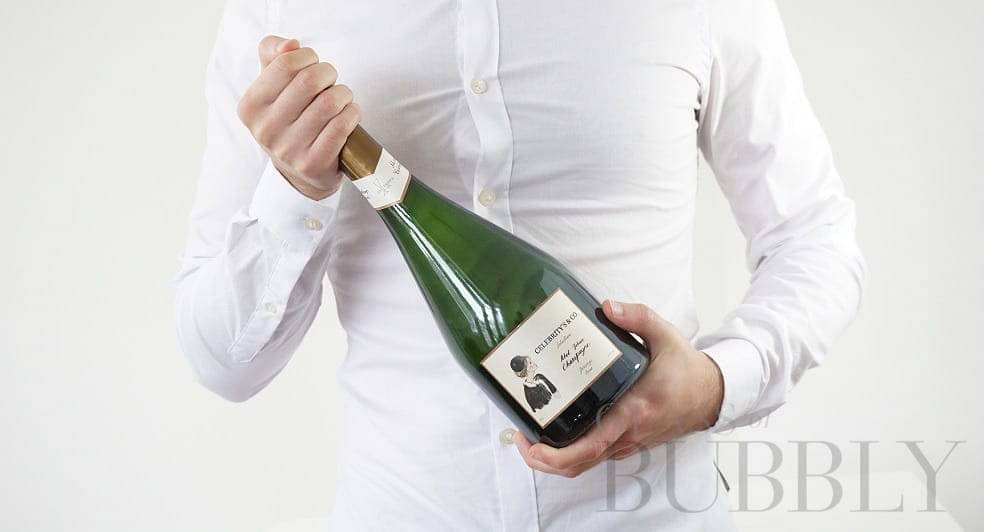
After chilling down your Champagne, either in your fridge or an ice bucket, you’re going to want to open it, so you have to decide after you take off the wrapping around the cork, will you control the pop, trying to make a whisper sound, will you let the cork fly down the end of your garden hoping for a big popping sound or will you do the cool, but dangerous saber strike, opening your bottle with the flat side of a big knife.
Controlling the cork when opening the bottle will give you the best chance to keep all of the Champagne in the bottle, if you can control the cork and open it with a whisper sound, then that shows you know a thing or two about Champagne, but if you’re with friends then letting the cork fly is a cool exciting moment which could make the Champagne taste a little better, not because letting the cork fly does anything to the Champagne, it’s because it can do something for you at the moment, your mood influences your tasting experience, the happier you are the more positive of an opinion you will have tasting your Champagne, then sabering the bottle is one step further, you just have to be careful with any broken glass and if done wrong, you could end up losing the whole bottle.
Discovering What’s In Your Glass

You may smell and taste your Champagnes and think that all Champagnes smell and taste the same, it’s ok if you do, most people can think the same, even I did when I first started. But I can say for sure that they don’t, think for just a second that Champagne is just like Chocolate, we have a lot of different Chocolate brands out there, and you’ve most likely tried a few, such as Smarties, Twirl, Galaxy and many more and with every Chocolate brand, each has their own unique taste, their own recipe which makes then different.
Some Chocolates do taste similar because, at the end of the day, most Chocolate is made from the cocoa bean, butter, sugar and milk, it’s the same with Champagne, most Champagnes are made from the Chardonnay, Pinot Noir and Pinot Meunier grapes, but it’s where the grapes are grown, when they are harvested, what the weather was like, how they press the grapes, how they store them, age them and bottle, plus more, that goes into making a Champagne, so the final result from one producer would very seldom be the same result from another one.
Champagne has its own unique flavours and aromas, like Nutty, Brioche, Toasty, Buttery, Oaky Yellow/Green Fruit and Floral characters, which can do identified in a lot of Champagnes, but one may have high acidity with a prominent nutty character and another may taste creamy with floral and buttery character, so let me try and help you identify what’s in your glass.
Pour Your Champagne Into Your Glass And Letting Discover What Secrets It Holds
The Dancing Bubbles
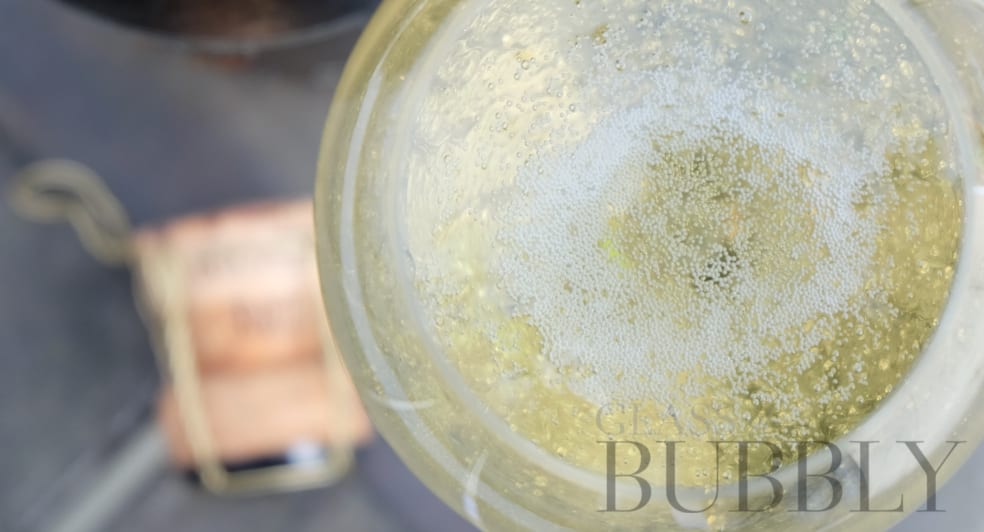
Champagnes come in a few different colours, normally all around the yellow to golden scale, unless you buy a Rosé Champagne which will range from pink to red, the colour can tell something about how the Champagne has been made, just like the bubbles can, but I’m not going to tell you about the technical side, I just want you to look, take a moment to get lost in them, as Dom Pérignon once said: “Come quickly, I am tasting the stars!”, you could be looking at them as well.
The Aroma of your Champagne
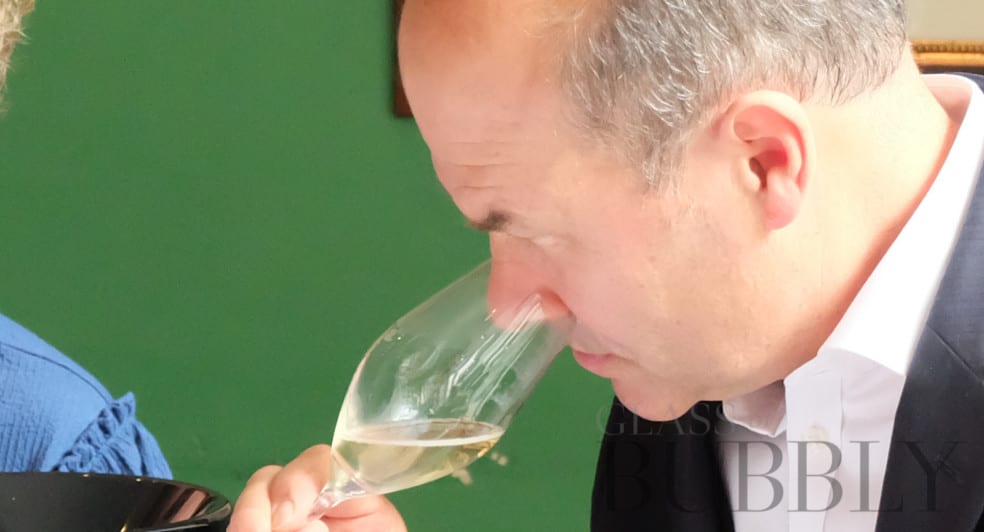
When first trying to identify different aromas from a Champagne, it can be very difficult, the more you do it, the easier it would get, but sometimes you need a little help, a visual stimulus can help you, put the glass to your nose and breath in, you can close your eyes if that helps you focus, just try and pick out one of the pieces of food you see on the image you have, do you smell brioche? how about butter or burnt toast?
Maybe you get something completely different which isn’t on the list, just write down or tell yourself what you get, if you still can’t get any aromas, then try and describe how it smells, is it strong and powerful, subtle or elegant, is it zesty and zingy, does it make you feel relaxed or alert, even these descriptions are useful.
The Flavours of your Champagne
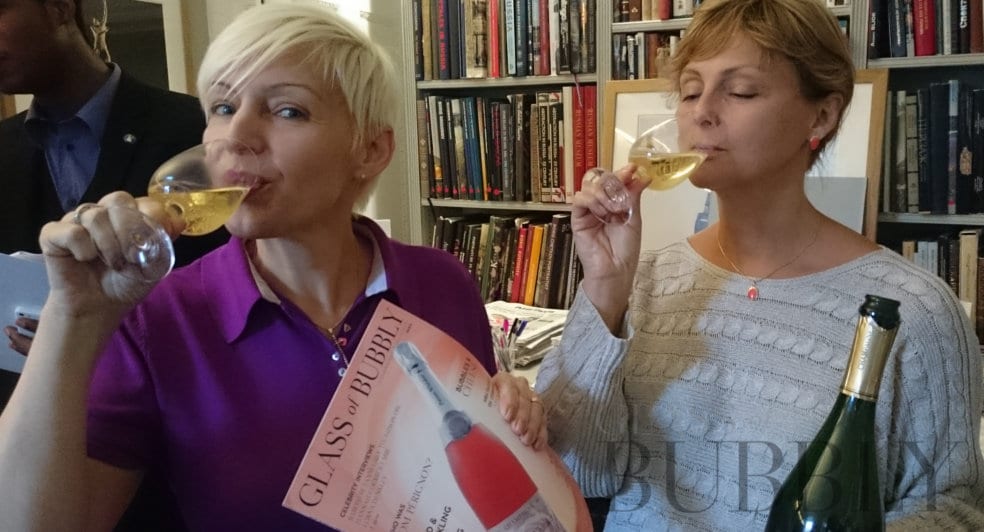
Tasting is done in the same sort of way, put the glass up to your lips and take a sip, don’t take a big mouth full, but don’t take too little either, keep the Champagne in your mouth for a little bit, move it around your mouth so it can make contact with the tongue, the roof and the sides of your mouth, this can help to try and identify the flavours, close your eyes if you want, and try and pick out a flavour, whether it be a nutty flavour like a peanut or walnut, a yeasty flavour like bread or burnt toast or a fruity flavour like apples or pears, then either write it down or tell yourself.
If You Need A Little Help – If you’re still struggling to identify anything on the aroma or flavour, then what you can try is to go through one piece of food at a time, for example, does this smell like, green apples, red apples, green pears, yellow pears, or does it taste like bread, toast, burnt toast, french bread, baguette. If the answer is no, move on, if it’s yes then keep note of it.
Doing something like this rushed might not lead to the most fulfilling outcome, so when trying this, make sure you’re not too stressed, you’ve got some time and find a quiet place to try it, either alone or with a friend or two, having other people opinion could help you put your finger on that tasting note you just can’t identify.

Finishing The Glass – All that is left to do now is enjoy the rest of your Champagne, whether it’s simply drinking it or going in for another tasting experience to try and find some aromas and flavours to note down. The way you enjoy your Champagne is up to you, but some Champagnes do hold some wonderful characteristics that are worth the time to explore.
![]()
Oliver Walkey
Champagne and Sparkling Wine Writer, Focused on Bringing the Exciting and Fascinating World of Bubbly to You.

